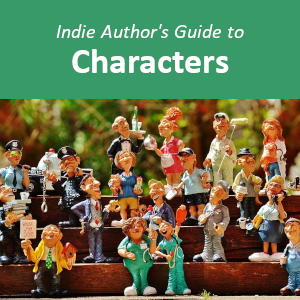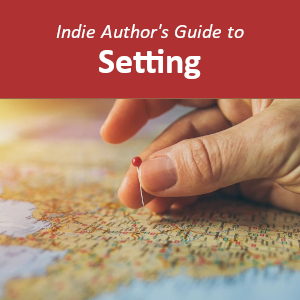An amazing itinerary and a breathtaking destination alone don’t make for a road trip unless you have someone to drive the car. Similarly, even the best plot requires well-developed characters to drive the story. True, some stories are more plot-based than character-driven, but every great novel needs characters that the audience can relate to, root for, or utterly despise. The quantity and types of characters vary widely from one book to the next, but character development is an aspect of writing that all authors need to give considerable attention to. Below, we will provide a plethora of information about characters that you may wish to use or refer to, especially if you are struggling with the characters in your novel. The lists and aids below will help you create, develop and portray all the characters needed to populate your novel.
Character Roles
Although every character is unique, you may find it helpful when creating new characters to note that nearly all characters fall into specific roles in a story. Sometimes these roles overlap, meaning that a character may fit into more than one category at a time, and most books don’t include characters that fill all the various roles listed below. Nonetheless, you may find it helpful to familiarize yourself with these roles, as they can help you create characters that truly add value to your story.
| ROLE | DESCRIPTION | EXAMPLES* |
|---|---|---|
| Antagonists | As the name implies, an antagonist antagonizes the protagonist. If your main character is a hero, your antagonist is the villain. Antagonists undermine, irritate, oppose, and create problems for your lead character. | Lord Voldemort / Coriolanus Snow |
| Reluctant Heroes / Antiheroes | An antihero often fills the role of the protagonist. What makes them unique is that they often lack the moral integrity typically associated with strong lead characters. Similarly, a reluctant hero is a character that is forced into their leading role. | Katniss Everdeen |
| Confidants | A confidant is a character that the protagonist trusts and turns to in times of need. | Albus Dumbledore / Gale Hawthorne |
| Contagonists | Similar to an antagonist, contagonists create conflict and difficulties for the protagonist. Sometimes they work alongside the antagonist, but more often they have their own motivations. Contagonists are useful for adding suspense and tension to the story. | Draco Malfoy, the Death Eaters, the Dursleys / Marvel, Glimmer, Cato, Clove |
| Sidekicks / Deuteragonists | Deuteragonists are characters that are only slightly less prominent than the protagonist. They typically surround and support the story’s lead character. | Hermione Granger, Ron Weasley / Gale Hawthorne |
| Foils | A foil is a character that clashes with the protagonist, but does not necessarily oppose them like an antagonist or contagonist. Foils may oppose the main character, but often they work alongside them, and the clash between them may simply be differences in personality. | Severus Snape / Effie Trinket |
| Guides | A guide is a mentor that helps the protagonist reach their full potential. Guides have experience, insight, and wisdom to impart to the lead character. If your novel features a reluctant hero, it is often the guide character that helps them to accept their responsibility. | Albus Dumbledore / Haymitch Abernathy |
| Love Interests | Most novels include a romantic interest in one form or another. A protagonist’s love interest is often, but not always, a deuteragonist. | Cho Chang, Ginny Weasley (for Harry Potter), Hermione Granger (for Ron Weasley) / Peeta Mellark (for Katniss Everdeen) |
| Protagonists | A protagonist is the leading character or one of the major characters in a novel. Every book has a protagonist, and it is this character that authors should give primary attention to. Although it is most conventional, your protagonist doesn’t have to be a hero, or even be likable, but they should be the central figure driving your story. | Harry Potter / Katniss Everdeen |
| Tempters | A tempter distracts the protagonist from their role or lures them away from it. A tempter could be a tertiary character, a love interest, a contagonist or even the antagonist, since their motivations could be either good or bad. | Coriolanus Snow (in offering to protect Katniss’ family if she suppresses the rebellion) |
| Tertiaries | Tertiary literally means of third rank or importance. Tertiary characters have minor roles in the story, and may only appear in a handful of scenes. | Katie Bell, Padma Patil, Parvati Patil / Flavius, Octavia, Venia |


Character Arcs
Character arcs are the transformations that characters make throughout the course of a story. Common character arcs are the development of new capabilities, personality traits, self-awareness, and self-acceptance. Not every character needs to have a character arc, although in most cases the protagonist will undergo a significant change. There are two character types that relate to a character’s arc.
| TYPE | DESCRIPTION | EXAMPLES* |
|---|---|---|
| Dynamic | A dynamic character undergoes a change throughout the story, and often we see this through a gradual shift in their personality. | Harry Potter, Neville Longbottom / Katniss Everdeen, Haymitch Abernathy |
| Static | Static characters do not change. | Gregory Goyle, Vincent Crabbe / Prim Everdeen |


Character Depth
Characters have varying amounts of depth to them. The primary characters in a story often have much better developed backstories, motivations and qualities, whereas tertiary characters have less. A balanced novel will typically have some of each type. Round and flat are two literary terms that refer to character depth.
| TYPE | DESCRIPTION | EXAMPLES* |
|---|---|---|
| Flat | Flat characters are uncomplicated and are typically characterized by just one or two dominant traits. | Lee Jordan, Mr. Filch / Cinna, Mrs. Everdeen (Katniss’ mother) |
| Round | Round characters have complex personalities, qualities, flaws, motives, and backgrounds. | Harry Potter, Severus Snape, Sirius Black / Katniss Everdeen |


Character Personality
Regardless of whether your character is dynamic or static, flat or round, for your readers to be engaged with them, they need to have personality. One common way that authors develop their characters’ personalities is to use archetypes. Archetypes are representatives of personality types that are commonly seen or universally recognized. Because of their inherent familiarity, characters that embody the values and traits of archetypes cause readers to connect with them quickly. You won’t find a comprehensive list of character archetypes since there isn’t a definitive number of them, and because certain ones go by multiple names. While widely used in literature, the idea of archetypes has its roots in philosophy and psychology, dating as far back as the 4th century BC, although it was nearly two thousand years later that archetypes were refined into the form we see today. Due to these ancient origins, some of the titles may seem antiquated, but don’t let that deter you from finding them useful in the creation of your characters. For example, unless you’re writing fantasy, The Magician won’t actually use magic, but may refer to any smart and crafty character that seeks power. As with Character Roles, mentioned before, some characters will fit more than one Character Archetype.
| ARCHETYPE | DESCRIPTION | COMMON TRAITS | EXAMPLES* |
|---|---|---|---|
| The Ally | The Ally is always ready to help their friends, even when times are tough. | Loyal, Reliable, Supportive | Hermione Granger, Ron Weasley / Gale Hawthorne |
| The Mother / Caregiver | The Caregiver unreservedly accepts and supports others. | Compassionate, Devoted, Selfless, Vulnerable | Hagrid, Molly Weasley / Prim Everdeen |
| The Child | The Child maintains the naivety and optimism of their youth. | Good-natured, Hopeful, Imaginative, Innocent | Hagrid / Rue |
| The Everyman / Common Person | The Common Person does not have any special talents but is down to earth and is very relatable. | Diligent, Empathetic, Grounded, Humble | Arthur Weasley |
| The Creator | The Creator is innovative, building new things and finding unexpected solutions to problems, and maintains an intense focus on their projects. | Compulsive, Creative, Proficient | Beetee Latier, Seneca Crane |
| The Explorer | The Explorer is always trying to expand their horizons, whether outwardly or inwardly. | Adventurous, Curious, Discontent, Fearless | Johanna Mason |
| The Warrior / Hero | The Hero is a character that faces trials and rises to the occasion. | Brave, Confident, Honorable, Resolute | Harry Potter / Katniss Everdeen |
| The Lover | The Lover is not necessarily a love interest, but is someone that is guided by their instincts and emotions. | Caring, Devoted, Impulsive | Luna Lovegood / Finnick Odair |
| The Magician | The Magician is a character that is highly skilled and seeks to use their abilities to increase their power or influence. | Arrogant, Clever, Disciplined, Mysterious, Wise | Tom Riddle / Plutarch Havensbee |
| The Sage / Mentor | The Mentor has a great deal of wisdom and shares their knowledge with those deemed worthy. | Cautious, Insightful, Patient, Perceptive | Albus Dumbledore, Minerva McGonagall / Haymitch Abernathy |
| The Orphan | The Orphan faces greater injustices and disadvantages than others in the world around them. | Determined, Naïve, Optimistic, Vulnerable | Harry Potter / Peeta Mellark |
| The Outlaw / Rebel | The Rebel is someone that fights against authority by any means necessary. | Inspirational, Obsessive, Uncompromising | Sirius Black / Gale Hawthorne |
| The Ruler | The Ruler is a strong authority figure. | Charismatic, Controlling, Greedy, Powerful | Cornelius Fudge / President Snow |
| The Seductress / Seducer | The Seducer profits from others by making bargains that outwardly seem mutually beneficial. | Charming, Crafty, Self-centered | Gilderoy Lockhart / Finnick Odair |
| The Shadow | The Shadow is a dark character that seeks power through unconventional means and does not recognize traditional morals. | Brooding, Focused, Intelligent, Secretive, Stubborn | Lord Voldemort |
| The Joker / Jester / Trickster | The Trickster finds humor in nearly every situation and often provides comic relief. | Carefree, Impulsive, Joyful, Superficial | Fred Weasley, George Weasley |
STOCK CHARACTERS: Additional inspiration for character personalities can be found through stock characters. Stock characters often have less depth and complexity than archetypes, and authors should be careful not to rely too heavily on clichés and stereotypes when using stock characters. Examples of stock characters include the macho bad boy, the cruel bully, the socially awkward geek, the athletic jock, the brainy nerd, and the absent-minded professor.


Character Development
The above charts may be very helpful in creating the framework for characters. However, engaging characters are unique, interesting and believable. Here are a few more things to consider as you fully develop your characters.
- CHARACTER NAME: One of the first steps in character development is to give the character a name. Naming a character is an important step because names may be representative of the character and often elicit strong feelings in the reader. For example, even before you learn their characters’ personalities, names like Draco, Crabbe and Goyle may evoke a more negative emotion than names like Katniss, Prim and Rue. As an author, you need to keep in mind your genre, setting and time period when selecting appropriate names. Many authors also give consideration to the approachability of their book, as giving multiple characters very similar names may confuse their readers, and including names that are too difficult to pronounce may intimidate some readers. If you struggle with naming your characters, you may be interested to note that if you look up “Character Name Generator” in a search engine, you will find a number of websites that can assist you in finding the perfect names!
- CHARACTER BACKGROUND AND MOTIVATION: To give a character more depth, relatability and realism, you will need to give attention to their background and motivation. By giving each character their own backstory and personality, you can determine what motivates them to act the way they do. Doing this will create characters that are believable and consistent, and thus characters that readers are sure to appreciate.
- CHARACTER BEHAVIOR AND QUIRKS: One of the easiest ways to distinguish your characters, giving them each a personality of their own, is to give them unique behaviors and quirks. Some examples of character quirks are Harry Potter’s forehead scar, Effie Trinket’s bright makeup and outfits, Severus Snape’s judgmental personality, Katniss Everdeen’s skill with a hunting bow, and Hagrid’s unrefined speech. Some of the best traits are ones that, rather than being superfluous, factor into your book’s plot or add to your character’s personality and motivations. And you’ll want to be careful not to overdo eccentricities or rely on stereotypes when including your character quirks.
- CHARACTER DEVELOPMENT SUGGESTIONS: Some authors have found it helpful to base their characters on real people, while being careful to change them enough to keep the characters fictional and their real-life counterparts unidentifiable. Other authors benefit by creating avatars of their characters, conducting character interviews, or filling out complete character profiles in order to fully understand and develop their characters.


Since your book’s characters are the ones driving your novel, you’ll want to be sure to give each one of them sufficient attention. The end result will be a book filled with people that your readers will find interesting, can relate to, and will either love or love to hate. And because of your book’s rich characters, your novel will be one that sticks in your readers’ minds for a long time after they’ve turned the last page.
* Our character role and type examples are from the Harry Potter series and the Hunger Games series, as these are some of the most popular novels of our current century and characters from these books are likely familiar to most authors.
YOU MIGHT ALSO LIKE









